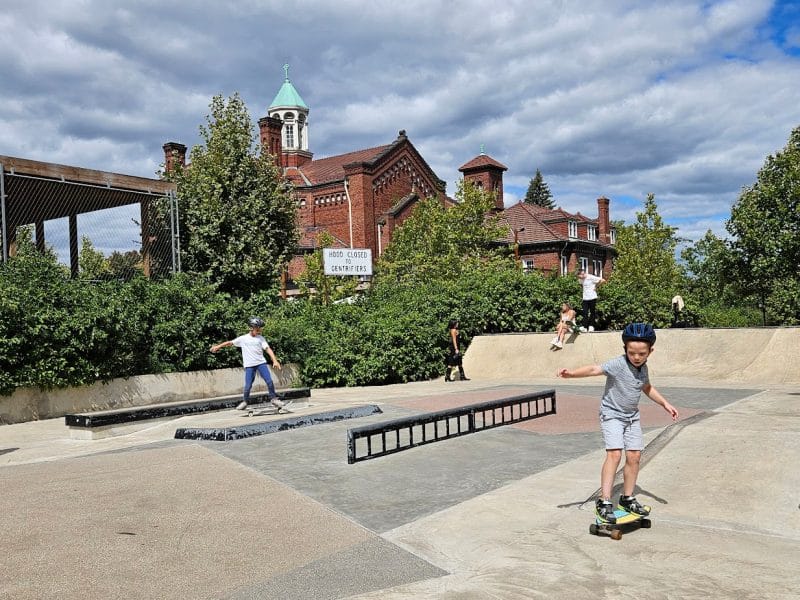Global Vibe: W
An international fashion photographer comes to Detroit not knowing what to expect. He feels the vibe. He gets it, and leaves inspired enough to devote 100 magazine pages over two issues to our fair city.
By now, nearly all who follow the media paying attention to Detroit know “the British supermodel comes to town” story. For the few who don’t, here it is again, in brief: Kate Moss, one of the most noticed women in the world came here this summer with the world’s most famous fashion photographer, Bruce Weber, for a street-level, funky Detroit-style shoot on the run.
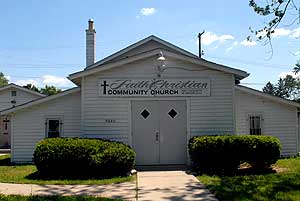 The photography was done in rock and blues clubs, in black churches and in old Polish-Ukrainian neighborhoods, a shoe store (Red’s) on Oakland and a hat shop (Harry the Hatter) on Broadway, at the Kronk Gym on the Westside and the Heidelberg living art museum on the Eastside. It appeared in a whopping 50-plus page spread in the September issue of W, Conde’ Nast’s massive coffee-table-style, fashion and beauty magazine. And more shots will show up in the November issue, due out later this month.
The photography was done in rock and blues clubs, in black churches and in old Polish-Ukrainian neighborhoods, a shoe store (Red’s) on Oakland and a hat shop (Harry the Hatter) on Broadway, at the Kronk Gym on the Westside and the Heidelberg living art museum on the Eastside. It appeared in a whopping 50-plus page spread in the September issue of W, Conde’ Nast’s massive coffee-table-style, fashion and beauty magazine. And more shots will show up in the November issue, due out later this month.
Weber’s lens also caught the glittery gritty splendor of the Detroit soul, sans Moss. He photographed high school kids from Cody High and Charlotte Forten Academy wearing sequined silk from MaxMara and black wool from Gucci; he found a 19-year-old girl named Chanel and posed her between two sexy men while wearing a tweed jacket by, natch, Chanel; he shot a prayerful young man in a white Dolce & Cabbana coat who, by night, calls himself Black China Doll, a female impersonator who routinely transforms into Brandy and Lil’ Kim.
It was a simple but powerful essay on people and place, with the slithery blonde everywoman Moss photographed at the busy intersection between the two.
Diamonds and gold
Why Detroit? The short answer: soul and inspiration. When W creative director Dennis Freedman flew to Detroit earlier this year, he wasn’t sure what he’d find, says the magazine’s bookings editor, Rena Lazaros.
“He found diamonds; he found gold,” says Lazaros, who grew up in the Detroit area and attended Wayne State University. She’s worked in New York for the past 13 years. “Dennis was blown away by Detroit.”
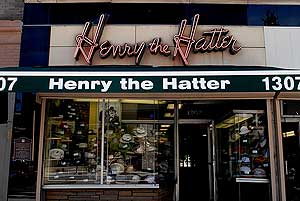 Model D photographer Dave Krieger, who worked in New York from 1991 to 2002, was enlisted as a location scout for the spread. While in New York, Krieger published his work in Mademoiselle, Marie Claire, and the New York Times Magazine, among other glossies. Since returning to Detroit, he says he’s gravitated toward the “heart and soul of the city, the tremendous life beneath the over layer.” Krieger says he knew exactly in what direction he wanted to point Weber and Moss for the shoot.
Model D photographer Dave Krieger, who worked in New York from 1991 to 2002, was enlisted as a location scout for the spread. While in New York, Krieger published his work in Mademoiselle, Marie Claire, and the New York Times Magazine, among other glossies. Since returning to Detroit, he says he’s gravitated toward the “heart and soul of the city, the tremendous life beneath the over layer.” Krieger says he knew exactly in what direction he wanted to point Weber and Moss for the shoot.
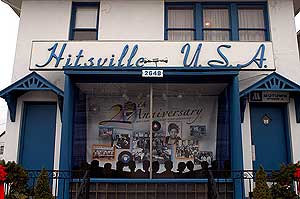 “There is the architecture that makes the downtown appear trapped in the 1920s, 1930s and 1940s,” Krieger says. “But I wanted to find those unrecognizable but identifiable aspects that give Detroit its special, off-the-radar vibe. We went looking for what makes this such a creative place. We wanted to find its heartbeat.”
“There is the architecture that makes the downtown appear trapped in the 1920s, 1930s and 1940s,” Krieger says. “But I wanted to find those unrecognizable but identifiable aspects that give Detroit its special, off-the-radar vibe. We went looking for what makes this such a creative place. We wanted to find its heartbeat.”
Where did the crew look for that beating heart? Inside Cass Avenue’s Old Miami bar, where Krieger says patrons treated Moss like “Kate Moss, the girl … just another soul walking the earth,” and at the Bohemian National Home’s ballroom on Tillman Street near Michigan Avenue, where a cluster of glammy electro-punks adoringly danced the night away with the nonchalant celebre who just happened to be wearing black nylon leggings by Prada.
 But the focus also tightened on the vibrancy of spiritual life in Detroit churches, like New Bethel Baptist — where Weber’s camera caught Aretha Franklin (sporting her own Louis Vuitton bag). Aretha’s late father, the Rev. C.L Franklin, founded the church in 1946. The original location was on the site of the current Detroit Medical Center, and moved to its current spot on Linwood in 1961.
But the focus also tightened on the vibrancy of spiritual life in Detroit churches, like New Bethel Baptist — where Weber’s camera caught Aretha Franklin (sporting her own Louis Vuitton bag). Aretha’s late father, the Rev. C.L Franklin, founded the church in 1946. The original location was on the site of the current Detroit Medical Center, and moved to its current spot on Linwood in 1961.
Krieger says Moss said little during her trips around the city — “She’s a ’90s girl, a cool Brit-pop icon who fit perfectly into the garage and blues culture here,” he says — but Weber often verbalized his fascination with Detroit.
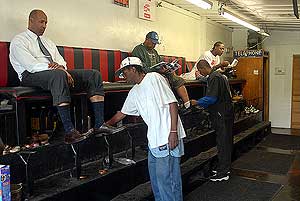 “Bruce understood it in a very intuitive way, and it showed in the piece,” he says. “He brought out the voice of a city, its people crying out for justice, through music, through art. The photo story is a dream sequence filled with people sitting around listening to records, dancing, making love. (Weber) picked up on the culture and the lifestyle, and captured the essence of the place, because he really loved it.”
“Bruce understood it in a very intuitive way, and it showed in the piece,” he says. “He brought out the voice of a city, its people crying out for justice, through music, through art. The photo story is a dream sequence filled with people sitting around listening to records, dancing, making love. (Weber) picked up on the culture and the lifestyle, and captured the essence of the place, because he really loved it.”
More love
Though one local art critic chirped at the indignity of seeing Moss — a “mere façade,” she wrote— pictured with an “authentic” Detroit icon like Meg White, and saw “‘desecration” in the crew’s use of the Michigan Central Train Station as a backdrop, real love and inspiration appears to have accompanied W’s visit to the city.
Weber’s camera found the gravestones of the Dodge Brothers, Horace and John; Rosa Parks and DeShaun Dupree Holton — a.k.a. Proof — all buried at Woodlawn Cemetery. It found 83-year-old Detroit Poet Laureate Naomi Long Madgett reading at Oak Park’s Book Beat; it found 85-year-old Richard Macon, who served in America’s first black flying squadron, the Tuskegee Airmen, with mist in his eyes and a hand on his heart; and it captured Moss, eyes closed, laying with a young man clutching her knee with one hand and a copy of Cornel West’s “Democracy Matters” in the other.
 Lazaros says the next step is a follow-up piece on the Heidelberg Project in W‘s
Lazaros says the next step is a follow-up piece on the Heidelberg Project in W‘s
November issue. One notable shot, of Moss descending the stairs of a
house strewn with polka dots — while also wearing a red-on-white
polka-dotted tee shirt herself (and black hot pants) — made it into the
September piece. But more photos of the project were taken during the
early summer shoot, including many that included Tyree Guyton, who has
been working on one of the world’s most famous public art installations
on Heidelberg Street since 1986.
Lazaros says it gives her a thrill that W has turned its attention to a place that she knows so well.
“I always knew Detroit was a special place, and Dave Krieger knows how special it is,” Lazaros says. “But when Bruce Weber goes there and comes back inspired by it, that says it all.”
Walter Wasacz is a regular contributor to Model D. This is his fourth installment of his Global Vibe series. Past articles in the series have been about DJs and electronic music, and international visitors.
Photos:
Bruce Weber and Assitants at the Michigan Central Train Station
Faith Christian Church
Henry the Hatter
Motown Museum
The Old Miami
Red’s Shoe Shine
Kronk Gym
All Photographs Copyright Dave Krieger


